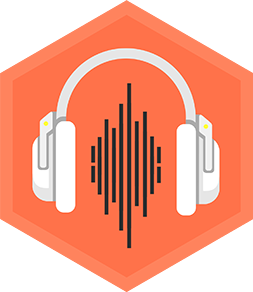Analyse your favorite song!
Listen to your favorite song, identify instruments, rhythm, melody, and lyrics themes, then create a short illustrated report explaining your observations and feelings.



Step-by-step guide to analyse your favorite song
Step 1
Pick one favorite song you want to analyze.
Step 2
Gather your paper pencil eraser and colouring materials and put them where you can reach them.
Step 3
Put on your headphones or sit close to your speakers so you can hear the song clearly.
Step 4
Listen carefully to the song at least once and pay attention to instruments rhythm melody and the words.
Step 5
Play the song again and focus only on the instruments you can hear.
Step 6
Write down the instruments you heard on your paper.
Step 7
Tap a steady beat with your finger or foot while the song plays to feel the rhythm.
Step 8
Write one word on your paper that says whether the rhythm feels fast medium or slow.
Step 9
Hum the main tune to notice how the melody moves up down or repeats.
Step 10
Write one short sentence that describes how the melody moves.
Step 11
Listen to the lyrics and write 1 or 2 short phrases about the themes or feelings the words show.
Step 12
Create an illustrated report by arranging your notes and small drawings on the paper to show Instruments Rhythm Melody Lyrics and Feelings.
Step 13
Color and decorate your report so it looks awesome.
Step 14
Add your name and the date to your report.
Step 15
Share your finished creation on DIY.org.
Final steps
You're almost there! Complete all the steps, bring your creation to life, post it, and conquer the challenge!


Help!?
What can we use instead of headphones or colouring pencils if we don't have them?
If you don't have headphones, sit close to your speakers or use a phone's speaker, and substitute colouring pencils with markers, crayons, stickers, or coloured paper scraps to decorate your report.
I can't hear individual instruments or keep a steady beat—how can I fix that?
Replay the song focusing on one section (verse or chorus), lower the volume or use an instrument-identifying app, and tap a steady beat with your finger or foot as the instructions say to help isolate instruments and rhythm.
How should I adapt the activity for younger kids or older kids?
For younger children, limit to naming one or two instruments, choosing fast/slow for rhythm, and drawing feelings instead of writing, while older kids can write detailed melody movement sentences, list lyrics themes, and create a more elaborate illustrated report with their name and date.
What are some ways to extend or personalize the illustrated report?
Enhance your report by recording a short clip of your humming or beat, adding the song title and a QR link to the track, using collage or layered colours to show rhythm and melody, and then share the finished creation on DIY.org as directed.
Watch videos on how to analyse your favorite song
How to analyse a song
Facts about music appreciation for kids
🧠 Listening to music activates many brain areas and can boost memory, emotion, and focus.
🎤 Many popular songs follow a verse–chorus–bridge structure, and the chorus is usually the most memorable part.
🎸 Musical instruments are grouped into families like strings, woodwinds, brass, percussion, and keyboards.
🥁 Rhythm is one of the oldest musical elements—people have been clapping and drumming for thousands of years.
🎧 Studies show people can often recognize a familiar song in just a few seconds.
How do I analyze my favorite song with my child?
What materials do I need to analyze a song?
What ages is this song analysis activity suitable for?
What are the benefits of analyzing songs with children?


One subscription, many ways to play and learn.
Only $6.99 after trial. No credit card required


